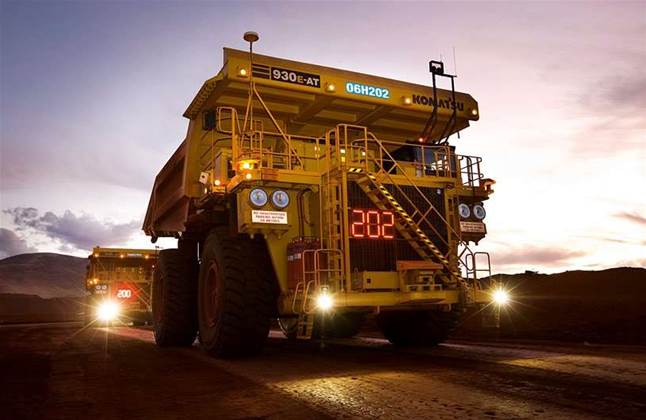Rio Tinto has declared it won't align with “any one technology supplier” as it builds out a central data platform capability.

The miner has been putting big data foundations in place for a number of years but is scaling up its work in the area after creating a data science unit in 2016.
It is looking to predictive analytics to generate insight across its operations and find further productivity gains that allow it to either mine more material, or to reduce the assets it needs to maintain current mining levels.
“We’ve done a lot of work on the basics over the years but we’re now raising the bar above what we considered to be good in the past,” Rio Tinto’s growth and innovation (G&I) group executive Stephen McIntosh said.
Combining data analytics, enterprise systems, in-house skills and the decade of experience it has built up since launching its 'mine of the future' strategy, McIntosh said the miner now has “all the ingredients to deliver the required step-up in productivity".
“At the start of this year we integrated our global IT teams into G&I and in so doing brought together all of our technical, data, automation, IT and cyber specialists under the one roof,” he said.
“We’re already seeing the benefits of this integration.”
Effort has been invested into building out a “stable, flexible” IT backbone for the company’s global operations.
It is now turning its focus to enhancing what it is calling the “Rio Tinto data platform”.
“We are currently simplifying our operating environment, building a foundational integrated data platform designed for agility to give us true freedom to operate,” McIntosh said.
“There’s been a lot of hype in the market around data platforms. The reality is that the market is embryonic and is evolving rapidly.
“Our strategy is to be platform-agnostic such that we can plug and play applications whether they be developed in-house or by third parties.
“We do not envisage at this time being aligned with any one technology supplier but rather we will partner with those who we can work with to add value.”
McIntosh said Rio saw the “growing volumes of data being generated across our businesses as a critical asset that will drive future operational performance".
“As such we will be focused on maintaining control over that critically important asset base and look to leverage it in everything we do,” he said.
In its iron ore operations, Rio Tinto has previously looked to algorithms to increase the amount of ore loaded into each rail car for its journey from pit to port.
Iron ore chief executive Chris Salisbury today said the company saw “many other levels to optimise the mine to port cycle".
One of the main ways is through the progression of its flagship autonomous rail haulage project, which is known as AutoHaul.
AutoHaul recently passed its first major test, with a train running in full autonomous mode without a driver on-board for almost 100km.
Salisbury indicated the test had resulted in “positive feedback” from Australian safety regulators.
“Preparation for final regulatory approval is well progressed after which we will commence removal of drivers from the trains,” he said.
The system is set to be fully implemented by the end of 2018.
One of the immediate productivity improvements from AutoHaul comes from the fact no driver change is needed.
However, Salisbury said the technology “will also enhance improvement work we are already doing on train spacing - [the distance from] the front of one train to the front of the following train".
“Better spacing enables either more trains to run or extra time for maintenance,” he said.
“Our current train spacing is around 16km with an aim through study work to push that below the 10km mark.”
Rio Tinto is also hoping to run more trains, with each train carrying a bit of extra ore.
To increase the volume of ore that each rail car can carry, Salisbury indicated the miner is in the processing of “refocusing” the way it maintains rolling stock. Data is set to play a key role.
“This includes, for example, better predictive ability from instrumented ore cars and track monitoring equipment, and adding more efficient integrated track machines to our maintenance fleet,” he said.




_(22).jpg&h=140&w=231&c=1&s=0)
_(20).jpg&h=140&w=231&c=1&s=0)





 iTnews Executive Retreat - Security Leaders Edition
iTnews Executive Retreat - Security Leaders Edition











_(1).jpg&h=140&w=231&c=1&s=0)



